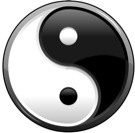Researchers conclude that acupuncture points are related to both unmyelinated and myelinated afferent nerve fibers in a unique neuroanatomical structure not found in other areas of the body. The researchers used light microscopy on silver stained sections of acupuncture point P6 (silver-stained human cadaver sample) and used confocal light microscopy on a live subject for acupuncture points GB20 and SP6. Control sites were compared with the acupuncture points. At the acupuncture points, it was discovered that a nerve bundle extended to the dermal-epidermal junctions. Each bundle branched into 2 sections perpendicular to each other. This anatomical phenomenon was not observed at the control sites. The researchers concluded that this acupoint neuroanatomical finding suggests that, “acupuncture may incise afferent unmyelinated axonal branch points, disrupting both neural transmission to the spinal cord and crosstalk along meridians, while simultaneously stimulating larger, myelinated afferents, thus explaining both the immediate and long-lasting effects of acupuncture.”

Reference:
Morry Silberstein, Katharine Adcroft, Aston Wan, and Masimilliano Massi. Medical Acupuncture. Afferent Neural Branching at Human Acupuncture Points: Do Needles Stimulate or Inhibit?, doi:10.1089/acu.2011.0823. Department of Chemistry, Curtin University, Perth, Western Australia, Australia. Department of Pain Management, St. Vincent's Hospital Melbourne, Victoria, Fitzroy, Victoria, Australia.

